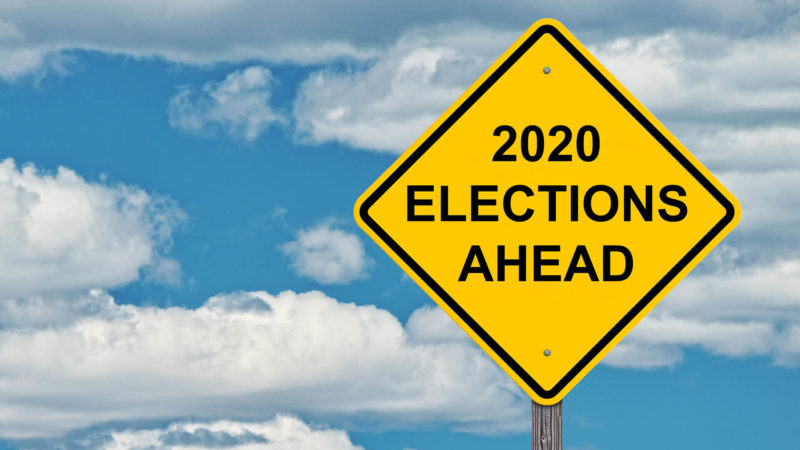Marketers must get smarter about using technology to better serve customers and increase the value you represent to them in the coming year.
The internet is replete with predictions of what’s going to happen in the coming year. I usually don’t put much stock in them because this industry changes every 5 minutes. If even half of the predictions come true, I’m impressed.
That’s not going to stop me from putting out my predictions for next year. But they’re not predictions so much as observations of what the natural evolution in our industry could be. The last thing I want to do is to pontificate on high because I’m just another schmuck trying to make a living.
I’m also going to take it a step further and not just talk about what I think will happen but also what you can do to turn it to your advantage. That’s really where the value is, right?
Okay, here we go!
1. Privacy will continue to grow as consumer and government concerns
The United States is surrounded by countries whose privacy laws are stronger than ours, whether it’s GDPR in the European Union, CASL in Canada to laws that are either being enacted in California or being considered in Congress.
What’s clear is that the Wild West of data use is coming to an end. What are hastening its demise is not just the almost daily announcement of data breaches but also the high visibility of some of those breaches and mistakes in data use and protection.
The Cambridge Analytica scandal involving Facebook was a watershed moment because the impact is that the consumer is tired of having their data used or misused everywhere.
The Russian probe will have a greater effect on consumer attitudes because of allegations of Russian interference in the 2016 elections and the advertising that was done on a personal level.
People see these things happening more often and affecting them more personally, and they begin to doubt what’s true. This doubt and the apparent lack of control they have over where and how their personal data is being used is scary for consumers.
California just enacted a strict privacy law, and Colorado and other states are drafting their own legislation that will attract the feds’ attention. I expect to see something crafted in the next year at the national level, but whether it will be worth anything is anybody’s guess.
What the marketer must do: Get up to date on everything that’s happening, not just here in the U.S. and not just in the countries where you have customers but also in countries that have a major influence in email marketing.
For example, do you know what the key provisions are in CASL (Canada’s Anti-Spam Law)? What about GDPR? That new California privacy law I mentioned before?
You can’t rely on your privacy officers or legal counsel to tell you what to do with email. You are the one who will drive that conversation.
2. Marketers will keep getting smarter because of technology
Smarter, that is, thanks to the technologies that ancillary providers like Kickbox, LiveClicker, Phrasee and real-time email tech providers have created to jumpstart the continuing need for relevance. Marketers will continue to advance because these companies give them the tools to push the proverbial “easy” button.
These technologies are part of the second wave of email innovation that I described in a previous column that is making email, and the people who use it, more relevant and useful to recipients.
What the marketer must do: Although many of these new technologies are making email and marketers smarter, you need to be careful to avoid “shiny toy syndrome,” also known as GMOOT (“Get me one of that!”).
Get up to speed on all of the new tools and processes you can use to learn more about your customers and to put that information to work in your messaging programs. But don’t innovate for the sake of innovating.
Think instead about how innovation can help your customers, how you can better serve them and increase the value you represent to them.

3. The rise of the machines and the plague of misinformation
Today, when I hear people talking about artificial intelligence and machine learning, I want to throw up. Mainly, it’s because of all the misinformation masquerading as expert information about what each one means.
On one end of the spectrum, people talk about AI as if it were the voice of IBM’s computer Watson when he (I mean, it) was on “Jeopardy.” That is, it makes decisions for us and makes us smarter.
On the other end are the people who understand it and know that both AI and ML need humans to feed in all the data and context the computer uses to make decisions. Flaws in the process mean the output driving your automation and insights will be flawed, too.
In 2019, we’ll continue to see more refinement in what each technology means – AI and ML are not the same – and how they can help us make the right decisions. We’ll learn more about how to make the inputs valid, too.
This could come from third-party tools or resources, by companies leading by example or by agencies pushing their clients forward.
What the marketer must do: Get smarter about how we explain and implement and do things in a scalable way instead of buying a technology that just allows us to check a box in our reports to the directors of our companies.
Read up on all the changes in technology, tools and processes that are available to us now. Sit in on webinars from respected sources, not just vendors but outside groups like Forrester, Gartner and Internet Retailer.
These groups don’t have vested interests in the topics they cover. Instead, they report on the movement of the industries they study. Be educated so that when you are talking to your boss or looking for vendors, you can call out those who claim they’re using AI or ML but really aren’t.
Many vendors use these technologies interchangeably or are just trying to capitalize on the buzzwords of the moment. You are responsible for being able to see when a vendor’s claims are legitimate or just smoke in the wind.
4. The personal brand experience will change
I was at Kroger (a U.S. supermarket chain) to pick up groceries I had ordered online. My experience with the brand fulfilled my expectations: I found everything I wanted by using the search form. The carryout worker brought my items to my car. The process took less than 5 minutes.
This impersonal brand experience will spread to other industries. This online experience, in which apps deliver what you need without having to talk to a person, will change how customers identify and choose brands.
That means a company’s order and fulfillment process will become a major driver of its brand experience, which is like a contract between the brand and the consumer.
What marketers must do: Recognize that the brand experience is changing and evolve brand communications that retain instead of selling.
Kroger does a great job of following up its “pick and click” sales with emails that thank me for using the online ordering system and ask me about my experience to make sure everything was okay. This is a “must” with impersonal online systems, where your customers will never go into a store.
This evolution in the brand experience makes post-transactional emails and other brand communications essential elements of the experience. These are not emails that sell anything. Instead, they reinforce the brand promise and seek to retain customers who might choose easy of buying over loyalty.

4.5: 2020 political email is already competing for attention in the inbox
The midterm elections are over in the U.S. Wasn’t that fun? Now we have to look forward to 2020 and the general elections, including a presidential run. If you thought the unending assault of emails, calls, commercials and mailers was bad this year, just give it a few months.
For marketers, it means even more competition for attention, in the inbox and beyond it. So, why is this prediction only half of one? Because we’re still two years away, and the volume so far isn’t that large.
But, in 2020, I’m predicting that we’ll need to head for the hills. We already have many distractions in the inbox, but political email is becoming a regular feature there.
Sure, there’s a difference between retail and political messaging, but political cadence and volumes continue to increase. We will continue to see increased communications as the amplified division drives to Election Day.
What the marketer must do: Work harder to differentiate your emails in the inbox.
If all you send is promotional messages, they’re no different from a political email seeking a donation. That’s like Democrats and Republican groups saying, “Those other guys are bad. Please send $25.” Aren’t we doing the same thing with our promotional emails, only with prettier pictures?
For 2019, do something different. That’s what I asked you to do last year in my year-end column. What did you do differently this year? Build on that or try a new approach that will help your messages stand out.
Between political emails, the rise of machines and changing privacy, technology and brand experiences, we have a lot coming at us. So, take a moment to reflect. As Ferris Bueller says, “Life moves pretty fast. If you don’t stop and look around once in a while, you could miss it.”
I wish you all a Happy New Year.

Recent Comments